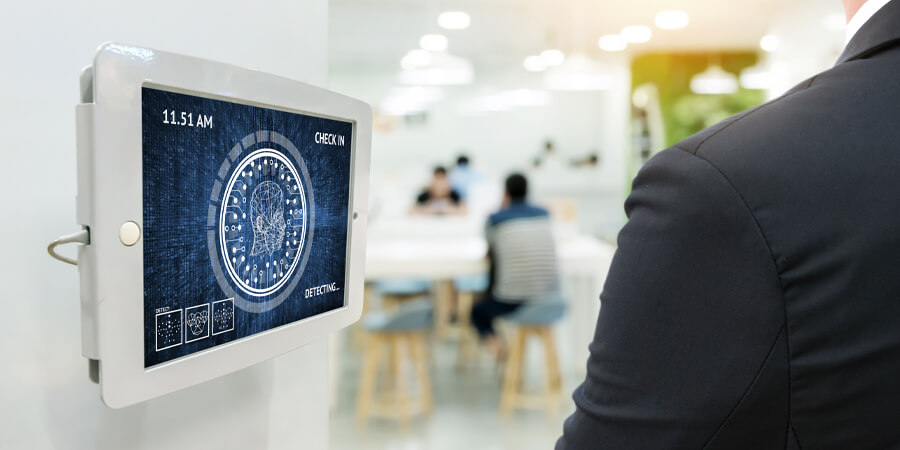The unambiguous identification of individuals on the basis of their inherent physical or behavioral characteristics is known as “biometrics.” Thanks to this method, it is now possible to recognize the patterns specific to each individual (based on immutable characteristics such as the face, the voice, fingerprints, heart rate, etc.), and then employ them to recognize customers in all varieties of services.
Given that these traits cannot be imitated, they allow for safe access to delicate operations like remote financial transactions. Fintechs are able to solve issues with online anonymity and social media networks by using biometric security while also providing practical and easily understandable solutions for clients' and employees' day-to-day business operations.
An array of parts vary biologically from person to person, the face, iris and fingerprint being prime examples. Scientists questioning whether such distinctions could currently be used to identify individuals led to the creation of biometric technology. And these biology-based assessments are indeed making their way into the workplace.
Data indicates that 90% of company owners currently employ biometric technology, with 57% using fingerprint identification and another 20% using facial recognition. The very nature of businesses and work itself has altered as a result.
AI-Based Face Recognition System
Modern mobile phones are often equipped with recognition systems that can be used to unlock them, start applications or accept payments. In short, biometrics are already used by mobile phones to authenticate users and greenlight services.
In addition to systems that use fingerprints, products such as SmileID use facial recognition technology to distinguish a gesture or smile, which can enact payment authorization or the closing of a tool. The advantage of facial identification technologies is that they can work on most any camera device.
Biometric technologies can also enable the use of shared vehicles (car, motorcycle or scooter rentals, for example) and other collaborative economy initiatives as well:
Unlocking/Opening of Vehicles
To unlock and start a vehicle or record its use for future billing, a mobile app can replace a key or conventional code. This guarantees a very fast and hassle-free rental of such applicable vehicles.
Access Control/Scoring in Companies
The most popular method of access control in commercial buildings is facial identification, followed closely by fingerprint recognition. This industry is experiencing a boom in biometric technology as it reduces staff requirements and the hindrances of lost or stolen keys or access badges.
For many companies, the same system can be used for time management as well as the scoring of inputs and outputs. Employees who work from home will find such access particularly useful.
Commercial Payment
It goes without saying that integrating biometric security into retail payment systems can be particularly beneficial. Given the growing popularity of mobile phones as direct payment systems, the use of voice, face or fingerprint models allows users to easily and effectively mitigate the accompanying risks associated with such convenience.
Our SmileID solution is among the most advanced on the market and provides a simple, safe method to make such advantageous payments.
Client Integration or Registration
User registration is one of the most intriguing applications of biometrics and is particularly useful in the FinTech industry. With this function, the client’s identity is verified along with their documents in accordance with the biometric scheme that is utilized. The needed video integration comes down to just a few minutes of document verification and video capture with technologies like VideoID. The system uses both synchronous (video call) and asynchronous (further processing by an agent) approaches, providing notable flexibility and advantage.
What Are the Benefits of Using Biometric Technology at the Workplace?
As always, safety remains a top priority. When privacy and data security are breached, things can go south pretty quickly. Hackers can break passwords and steal pins. Our personal and business information can be mined by third parties. Such personal information can even be used to extort us. The protection of our data, our possessions, our finances, and even our respect require strong security. And this is precisely why biometric technology can prove extremely popular with us all.
Additionally, in a company or workplace, time is valued similarly to money. In short, companies can make more money if they manage their time well. While keeping track of an employee's working hours, overtime and attendance can be challenging, biometric technology has made it easier, more manageable and more widely available. Indeed, such systems help save precious time and money.
Today, many companies are using biometric technologies to provide their customers with the best security systems and protection. When accessing applications, media, emails and the gallery on contemporary intelligent devices, facial recognition is often now a requirement, saving us from having to type lengthy passwords or the risk of forgetting them in the first place. In the end, the unlocking of our devices or the accessing of our data is more readily proving to be as simple as the recognition of a face or fingerprint.







